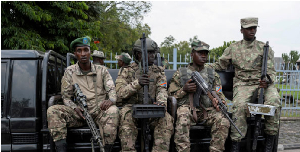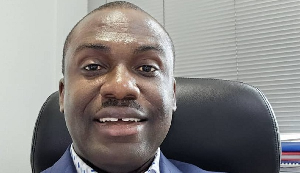The need to establish robust surveillance systems across various countries and also globally, must be on top of the agenda and on the front burner due to the continuous easing of the COVID-19 restrictions.
The emerging trend of periodic and unpredictable outbreaks of diseases in the last few years makes it clear that strong surveillance structures and strategies would be playing a major role in the successes or failures of containing the spread of virulent and deadly conditions such as the Ebola virus disease and coronavirus disease.
Increasingly, dangerous diseases are easily crossing national borders and spreading like wild fires while remaining hidden and unannounced and they only get detected when morbidity and mortality cases are rising.
It is in the light of these that every effort and resources must be made available at the community, national and international levels to deal with the containment of these pandemics through very strong and robust surveillance systems.
Staying alert
Not too long ago, the World Health Organisation (WHO), commenting on the coronavirus disease, had indicated that it had taken note of moves by various countries to lift restrictions on domestic and international travel, stay-at-home orders, closing of schools, shops, and religious centres, among others.
It had however cautioned that robust surveillance systems should be in place to control the spread of the COVID-19.
“The aim of surveillance for COVID-19 is to limit the spread of disease, enable public health authorities to manage the risk of COVID-19, and thereby enable economic and social activity to resume to the extent possible.”
“Surveillance is also necessary to monitor the longer-term trends of COVID-19 transmission and the changes in the virus,” the WHO had said in its document titled: “Surveillance strategies for COVID-19 human infection.”
The purpose of the document was to provide an overview of surveillance strategies that WHO member states should consider as part of a comprehensive national surveillance for COVID-19.
Many had kept hope alive in the early days of the pandemic believing that it would soon vanish just as quickly as it appeared.
However, unfolding events, the pattern, behavior and spread of the coronavirus and human behavior have suggested that, until an efficacious vaccine is found, the world is in for a long haul in the battle against the pandemic. Other infectious diseases may also appear or hovering around in the dark.
It remains uncertain when the WHO would declare that the COVID-19 is no longer of public health significance across the globe. It may take time just as it did in determining the origin of the virus.
The delay in unravelling the mystery of origin of the coronavirus disease strengthens the fact that countries need to mount up robust surveillance systems right from the community level in common public places such as markets to the national level to contain infectious diseases, which spread easily and quietly within communities and populations.
The origins of the COVID-19 became a topical and controversial issue with lots of speculations as to its source. Officials in Wuhan City, China, first reported the first human cases of the COVID-19 in December 2019.
The WHO in its document titled: Coronavirus disease 2019 (COVID-19) Situation Report-94 said that while some of the earliest known cases had a link to a wholesale food market in Wuhan, some did not.
It added that many of the initial patients were either stall owners, market employees, or regular visitors to this market.
The coronavirus story of origin, as told by the WHO, is that the SARS-CoV-2 was identified in early January and its genetic sequence shared publicly on January 11 and 12.
“The full genetic sequence of SARS-CoV-2 from the early human cases and the sequences of many other virus isolated from human cases from China and all over the world since then show that SARS-CoV-2 has an ecological origin in bat populations,” said the WHO’s Coronavirus disease 2019 (COVID-19) Situation Report-94 report.
It noted that all “available evidence to date suggests that the virus has a natural animal origin and is not a manipulated or constructed virus.”
The WHO noted that many researchers have been able to look at the genomic features of SARS-CoV-2 and have found that evidence does not support that SARS-CoV-2 is a laboratory construct.
Whatever the experts have concluded on as the origin of the COVID 19, one thing is clear that it was spreading quietly among the population from very common public places such as markets.
This makes a strong and robust surveillance system a key issue in public health delivery and service to ensure that people do not die needlessly from COVID-19, Ebola, cerebrospinal meningitis and other infectious diseases, before the health systems respond at the community, national and global levels.
Putting in effort,/b>
For instance, a lot of literature and research on Ebola have indicated that the Ebola outbreak in West Africa exposed various weaknesses in the public health surveillance preparedness and response systems of the affected countries in the sub-region – Guinea, Sierra Leone and Liberia.
More recently, during the early days of the COVID-19 the Ghanaian public health system appeared to be taking a nap as officials were caught off guard while managing COVID-19 related illnesses and deaths. People were dying from an outbreak of cerebro spinal meningitis in parts of the north without any intervention.
It did appear that the public health, including the surveillance system, was slow in catching up. It took many media reports to get the attention of health authorities to respond to the cerebrospinal meningitis issue.
One of the big lessons that COVID-19 has taught is that the world can be caught off guard and remain unprepared when it comes to the sudden spread and containment of infectious diseases.
Diseases such as the COVID-19 and Ebola have exposed the world to useful lessons and brought to the fore the need for absolute cooperation in monitoring disease outbreak within and outside national borders.
In July this year, Dr. Tedros Adhanom Ghebreyesus, WHO Director-General’s opening remarks at a regular media briefing on COVID-19, touched on how the disease has changed the world and brought people, communities and nations together.
He said in the speech that; “we have learned an enormous amount, and we’re still learning…But although our world has changed, the fundamental pillars of the response have not: political leadership, and informing, engaging and listening to communities.”
“As we mark six months since the declaration of the global health emergency, the COVID-19 pandemic is illustrating that health is not a reward for development, it’s the foundation of social, economic and political stability.”
“We are not prisoners of the pandemic. Every single one of us can make a difference. The future is in our hands,” he added.
Being prepared
The WHO has in one of its documents listed different and very basic ways in which surveillance on COVID-19 can be achieved including the role of individuals in the community.
It touches on participatory disease surveillance, which relies on voluntary reporting and facilitated by dedicated smart phone applications.
It also adds the need for telephone hotlines to be made available to the public for advice and referral to healthcare services that may provide an early indication of disease spread in a community.
The WHO however urges that effectively running a telephone hotline service requires dedicated resources and trained staff to appropriately refer callers to the relevant healthcare or other service.
Other types of surveillances mentioned are hospital-based surveillance, sentinel surveillance, mortality surveillance and event-based surveillance.
What is important in all of these is that public health specialists who understand these issues may just have to raise their game to quickly spot and contain dangerous diseases such as the COVID-19 and Ebola virus disease.
Opinions of Sunday, 4 October 2020
Columnist: Eunice Menka









![Isaac Kwadwo Ampong [L] and President John Mahama Isaac Kwadwo Ampong [L] and President John Mahama](https://cdn.ghanaweb.com/imagelib/pics/549/54996138.295.jpg)





